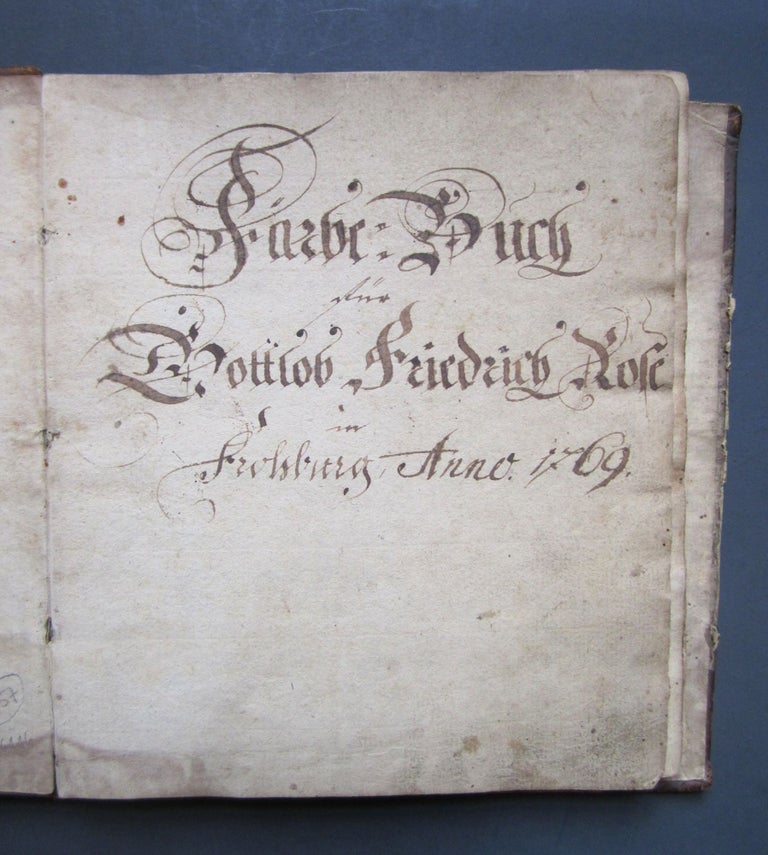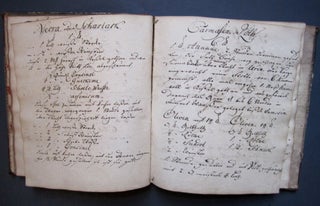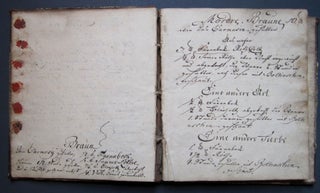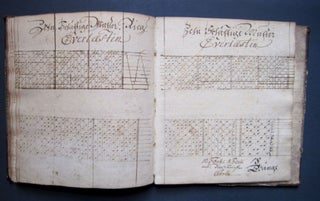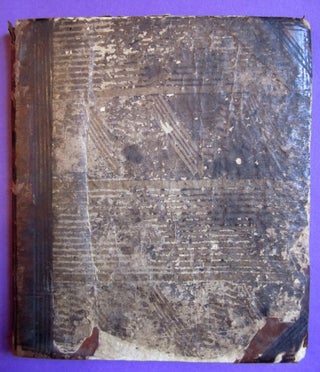“Färbebuch für Gottlob Friedrich Rose in Frohburg Anno 1769.” Frohburg, 1769.
Manuscript on paper (186 x 160 mm). [47] leaves plus two blanks. Fraktur & cursive script. Illustrated with 11 pages (ff. 41v-46v) of weaving patterns. No visible watermarks. Leaves 2-8 with remnants of red wax adhesive. Some soiling and staining. Contemporary half calf (sheep?), the boards covered in very crude comb-marbled paper (worn).***
An 18th-century weaver's manuscript recipe book and collection of weaving patterns, containing over eighty recipes for dyes and twenty-one weaving patterns.
The manuscript appears to be in one hand. An addition is dated 1789. The versos of the first six text leaves have small blobs of red wax along the foremargins, apparently the remains of an adhesive: the text implies that color samples were affixed in those places. The Gottlob Friedrich Rose for whom the recipes and patterns were recorded was presumably an apprentice or offspring of the weaver.
Each recipe contains a heading in Fraktur identifying the color and detailed instructions for its preparation, including quantity, in cursive script. The many recipes for shades of grays, greens, blacks and browns give a snapshot view of the street scene on cold, dark winter days; but at least as many reds, greens, blues, violets, yellows, and shades of gold and silver enliven the scene. Gradations of color and varieties of textile bases account for the quantity of different recipes: thus scarlet-red differs from red-scarlet, madder-red (Krapp-roth), carmine-red, English madder-red, red on linen, rose-red, and rose-red on wool. Gold-yellow, olive-green, English-black, flesh-color (Leib-Farb), wood-blue, violet-brown…together these colors evoke a pre-industrial world of local self-sufficiency. The weaving patterns, with names of popular weaves like "Everlastin" [sic], are for looms with different numbers of shafts (vier-schäftige, sechs-schäftige, zehn-schäftige, etc.).
Frohburg is a small town located midway between Leipzig and Chemnitz. Before industrialization weaving was its most important local industry. Architectural evidence of the craft subsists today in a few traditional artisans' houses, in which the ground floor contains the workshop or weaving room and the upper floor the living and sleeping areas (cf. Gestaltungssatzung Frohburg. Örtliche Bauvorsschrift der Stadt Frohburg, Frohburg 2000). Item #2211
Price: $3,800.00

